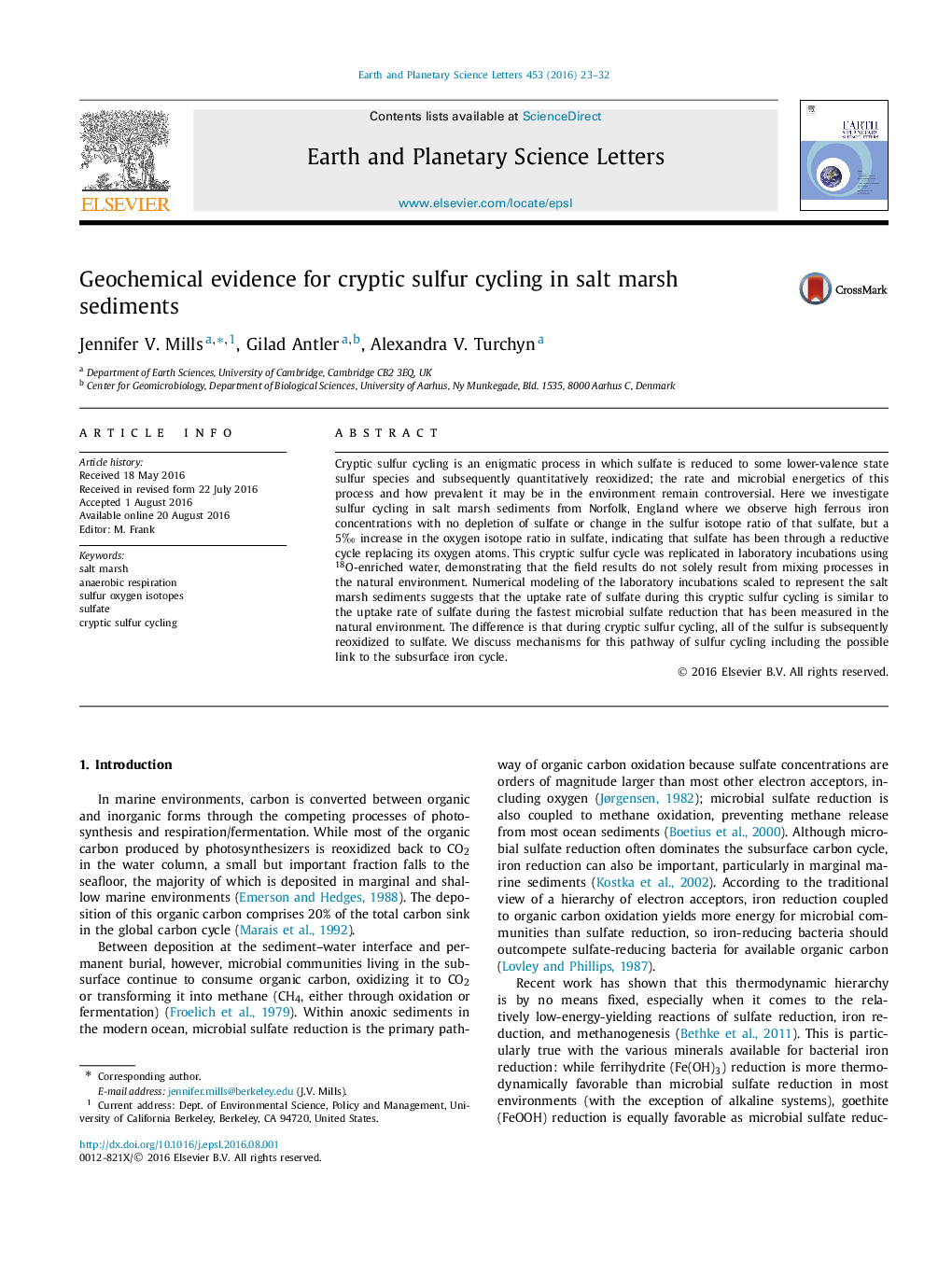| Article ID | Journal | Published Year | Pages | File Type |
|---|---|---|---|---|
| 6427137 | Earth and Planetary Science Letters | 2016 | 10 Pages |
â¢We observe a decoupling between the δ34SSO4 and δ18OSO4 in salt marsh pore fluids.â¢We replicate the behavior in laboratory incubations, suggesting an in-situ process.â¢We suggest this represents cryptic sulfur cycling.â¢Numerical models suggest cryptic sulfur cycling represents a large flux of sulfur.â¢Various potential mechanisms for cryptic sulfur cycling are discussed.
Cryptic sulfur cycling is an enigmatic process in which sulfate is reduced to some lower-valence state sulfur species and subsequently quantitatively reoxidized; the rate and microbial energetics of this process and how prevalent it may be in the environment remain controversial. Here we investigate sulfur cycling in salt marsh sediments from Norfolk, England where we observe high ferrous iron concentrations with no depletion of sulfate or change in the sulfur isotope ratio of that sulfate, but a 5â° increase in the oxygen isotope ratio in sulfate, indicating that sulfate has been through a reductive cycle replacing its oxygen atoms. This cryptic sulfur cycle was replicated in laboratory incubations using 18O-enriched water, demonstrating that the field results do not solely result from mixing processes in the natural environment. Numerical modeling of the laboratory incubations scaled to represent the salt marsh sediments suggests that the uptake rate of sulfate during this cryptic sulfur cycling is similar to the uptake rate of sulfate during the fastest microbial sulfate reduction that has been measured in the natural environment. The difference is that during cryptic sulfur cycling, all of the sulfur is subsequently reoxidized to sulfate. We discuss mechanisms for this pathway of sulfur cycling including the possible link to the subsurface iron cycle.
Graphical abstractDownload high-res image (116KB)Download full-size image
